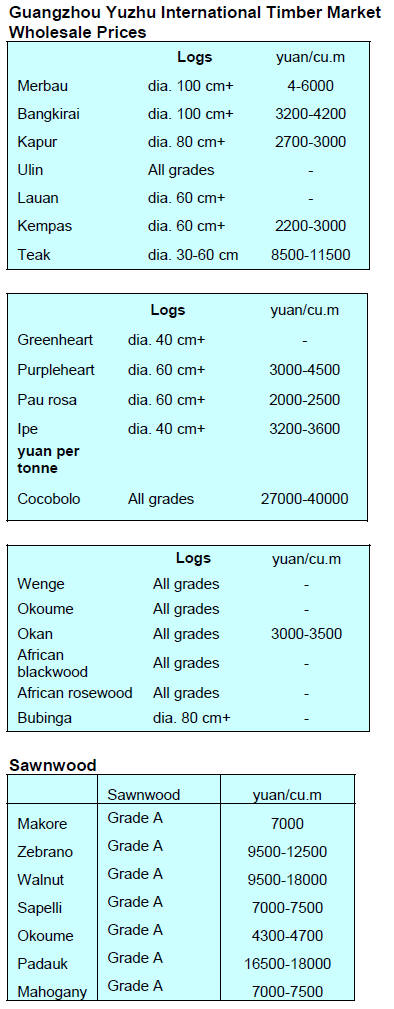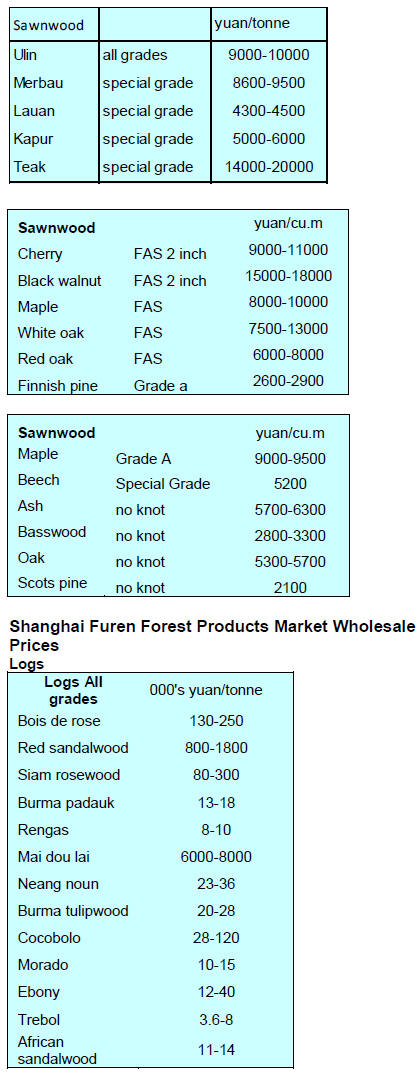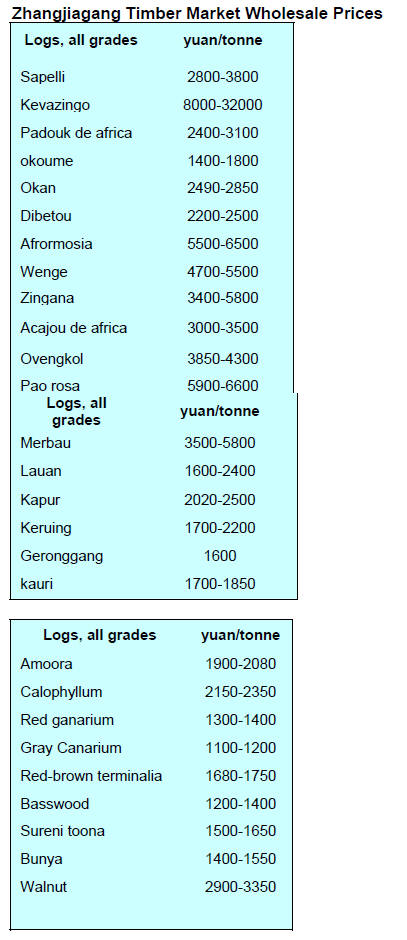US Dollar Exchange Rates of
25th November
2015
China Yuan 6.3964
Report from China
India slaps duties on imported MDF
Based on the findings of the Directorate General of Anti
Dumping and Allied Duties (DGAD), the Indian Ministry
of Finance has announced anti-dumping duties for
imported fibreboard.
The Indian government introduced these measures to
protect the domestic industry from low priced shipments
from China, Malaysia, Sri Lanka and Thailand. An
application for protective duties was lodged by domestic
fibreboard manufacturers. The DGAD determined that
domestic producers were suffering due to the dumped
imports of plain medium density fibre board.
The Chinese authorities have reported that India now
imposes anti-dumping duties on Chinese MDF. The
Chinese website reports that the anti-dumping duties on
Chinese MDF will be USD46.09 per cubic metre for
products falling within tariff code 44110000.
In addition, the rate of Indian anti-dumping duties on
Malaysian MDF is US$36.1 per cubic metre, Thailand
US$45.27 per cubic metre and the rate for MDF from Sri
Lanka¡¯s ranges from US$11.83 to US$26.49 per cubic
metre.
The Ministry of Commerce and Industry conducted antidumping
investigations on Chinese, Malaysian, Thailand¡¯s
and Sri Lanka¡¯s MDF in February 2015 and made a final
determination in August this year.
For more see:
http://trb.mofcom.gov.cn/article/zuixindt/201511/201511
01155073.shtml
or
http://www.cacs.gov.cn/cacs/newcommon/details.aspx?na
vid=B11&articleid=133741
Average import prices on the way down
According to China Customs, in the first three quarters of
2015 China¡¯s log imports fell 14% to 34.21 million cubic
metres while sawnwood imports rose slightly (+4%) to
19.9 million cubic metres.
Plywood imports dropped 10% to 117,200 cubic metres,
fiberboard imports dropped 7% to 161,600 cubic metres.
However, both OSB and particleboard imports increased
3% and 6% to 115,700 cubic metres and 333,800 cubic
metres respectively.
Average prices for imported logs, sawnwood, OSB,
particleboard and plywood fell 21%, 9%, 20%, 4% and
2% respectively. Average prices for imported fiberboard
and wood chips were maintained at the same level as
during last year.
Increase in log imports through Alataw Pass railhead
Log imports passing through the Alataw Pass railhead rose
more than 60% to 18, 000 tonnes in October 2015. The
Alataw Pass is in China's Xinjiang Uygur Autonomous
Region on the China-Kazakhstan border. The Alataw Pass
is the only railway and highway port in China's
northwestern region.
The main reason cited for sudden increase was that log
stocks had fallen sharply. The imported timber, mainly fir,
spruce, scots pine and birch is from Russia and most is
sold for milling in the Xinjiang area.
Interest in imported furniture wanes
In order to boost domestic sales imported furniture traders
have recently reduced prices by as much as 30%.
However, even with such big discounts domestic sales did
not pick up. Analysts report that the enthusiasm of
consumers for imported furniture has fallen and efforts at
promotion are not delivering results.
It now seems consumers in China are more price
conscious and are returning to purchasing domestically
manufactured furniture which is cheaper than imports even
with the heavy price discounts offered on imported
products.
Home furnishing pavilion at High Point
It has been reported that Guangdong furniture makers and
enterprises in North Carolina will jointly build a home
furnishing pavilion in High Point County. This new
undertaking will be implemented by the newly formed
China Home Furnishing Oversea Exposition Union. This
project is the first for the new Union.
The home furnishing pavilion will be opened in October
2016 and will offer locations for rent to the 30 to 50
Chinese home furnishing manufacturers expected to
exhibit at the pavilion.
The Framework Agreement between the Chinese and
American partners outlines areas of cooperation in
promotion, production, R&D, technology, personnel
exchange, marketing, brand development and exhibitions.
China enters custom furniture age
The sales of imported furniture fell this year and local
analysts put this down to changing life styles rather than
the economic slowdown.
There are many more home owners now in China and
most houses and apartments tend to be small or medium
sized and are owned by those born in the 1980s and
1990s.
These young home-owners demand functionality as well
as artistic and personalised furniture. Because of this there
is a growing trend to custom tailored furniture and
innovative furniture makers now offer whole house
furniture customisation.
For more see:
http://china-trade-research.hktdc.com/businessnews/
article/China-Consumer-Market/China-s-furnituremarket/
ccm/en/1/1X000000/1X002L63.htm

 
|